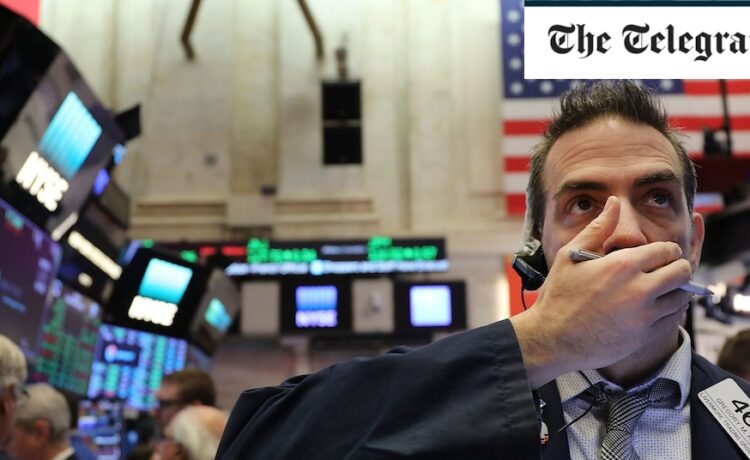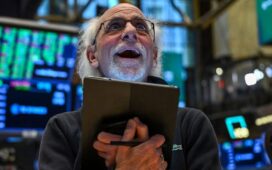It’s unscientific, but I’m having more conversations with younger colleagues who roll their eyes because I’m not buying this or that “sure-fire” bet. The seen-it-before red light in my head is flashing. Now feels like a good time to be thinking about investment risk.
The excellent Global Investment Returns Yearbook, put together for UBS by Paul Marsh, Elroy Dimson and Mike Staunton, tells you all you need to know about the risks and rewards of stock and bond investing.
Their first point is that both asset classes are volatile. We already knew that about shares, but during 40 years of falling interest rates we forgot that bonds can be too. If you’re in the right place at the right time – Germany and Japan during their post-war economic miracles, for example – you can make eye-watering returns from shares.
But the losses can be staggering too – 70pc in real terms for UK investors during the early 1970s oil shock, 65pc in Germany during the dotcom bust, an 80pc inflation-adjusted loss after 1929’s Wall Street crash.
For bonds, too, the variation in returns is striking. From 1982, when Fed chair Paul Volcker drove a stake through the heart of the inflationary dragon, until 2014, the world bond index provided a real return of 7.4pc above inflation. Bonds delivered a positive real return in 28 of those 33 years.
But fixed income investments can disappoint, too. Between 1940 and 1981, US Treasuries fell by 67pc and didn’t recover their pre-war value until 1991. They had spent more than 50 years under water.
Risk, however, is not the same thing as volatility. Markets go up and down, but what matters is whether or not you crystallise a loss. Human nature being what it is, the chance of you doing that rises the deeper you drop below the prior peak and the longer you have stayed in the red. The volatility is not the problem, it’s our loss of nerve.
There have been some massive drawdowns over the years and some painfully extended times to recovery. It took 15.5 years for US investors to fully recover from the Wall Street crash. In real terms it was more than a decade before markets regained their pre-oil shock level. Japan has taken 34 years to recoup what it lost after 1989, even in nominal terms.
For investors considering whether to invest after a strong rise in the market, a key question is how long they might be under water if they got really unlucky and found themselves putting their money to work right at the top. The Global Returns Yearbook goes some way to answering that by looking back at a comprehensive range of holding periods in its 124-year database.
Analysing 115 ten-year periods, 105 20-year spans, and so on, shows two things. First, that the range of likely outcomes narrows significantly as the holding period extends. Second, that the chance of a decent return increases the longer you are invested. Crucially, it shows that, for any given market, there is a number of years above which there are no instances of negative returns.
US equity investors have never held shares for 16 years or longer and lost money. In Denmark, Canada, Australia and South Africa, too, the longest period of negative real equity returns is under 20 years. The bad news is that in the rest of the world, you could have been less fortunate. A really unlucky Japanese investor could have spent 51 years under water in inflation-adjusted terms.
The best way to minimise the risk of this happening is to diversify your portfolio. Nobel prize-winner Harry Markowitz famously quipped that diversification is “the only free lunch in finance”, allowing investors to increase expected returns while reducing risk. The benefits are variable. They are much greater for investors in small, concentrated markets than in large, lower-risk ones like the US. But diversification is always a good idea.
Sensible, but not a panacea. The classic asset class diversification between shares and bonds worked well in the years after 2000 when they behaved differently from each other. For most of the 20th century, though, they were correlated to a greater or lesser degree. The experience of 2022, when both assets fell together, is less unusual than it felt at the time.
Fifteen years after share prices started to rise in the wake of the financial crisis, it feels like the current bull market is long in the tooth but still intact. The longer price rises go on, the lower our expected returns will be and the risk that we will spend some time under water will increase.
But the risks an investor takes when putting their savings into the market have been well rewarded over time – a 5.3pc a year real return for UK shares versus 1.4pc for gilts and less than 1pc for cash. Compounded year after year, that is a life-changing difference.
Tom Stevenson is an investment director at Fidelity International. The views are his own




